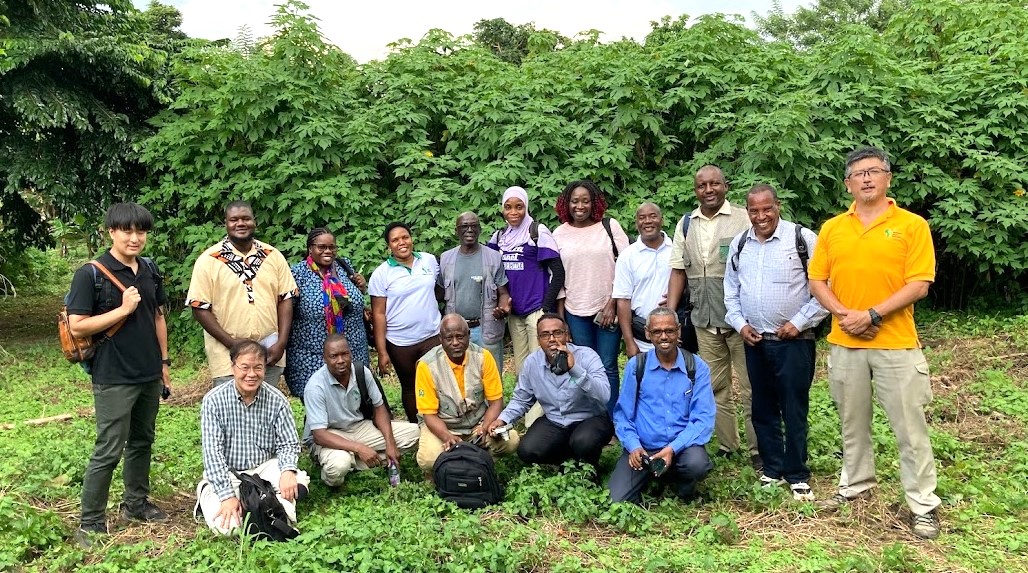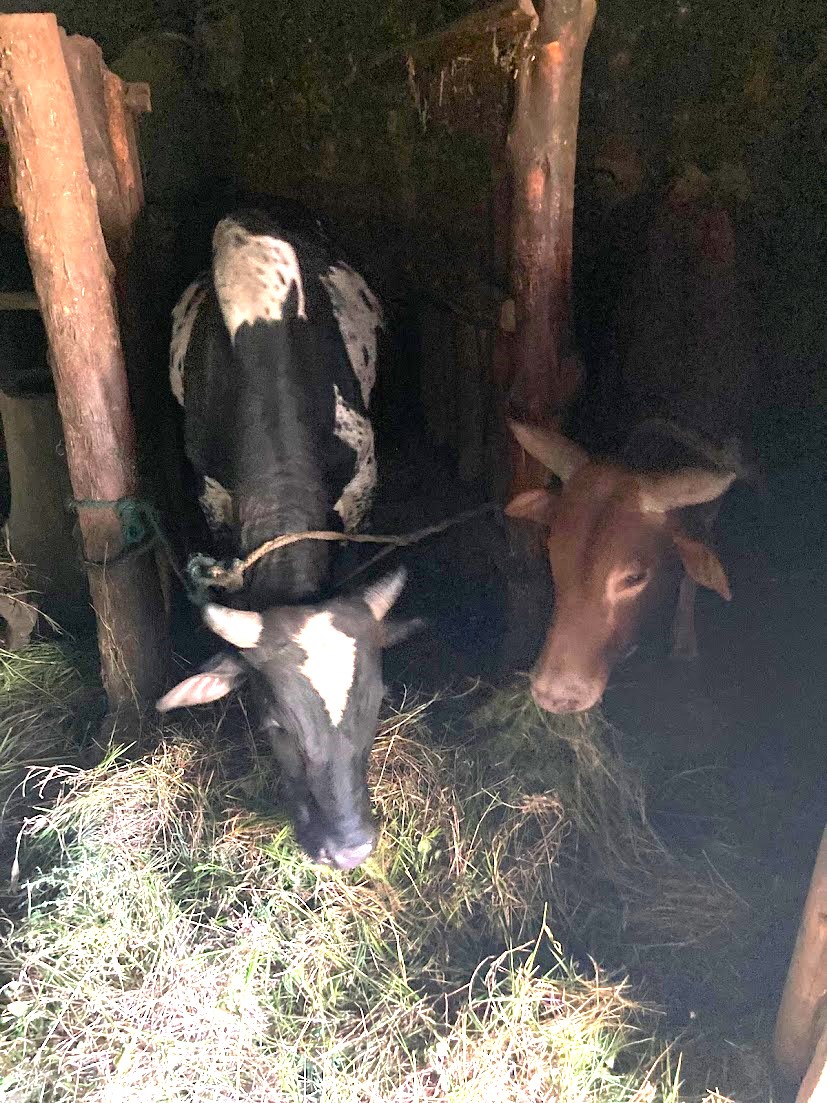Collaboration with the TERRA Africa research project and SAA’s Contributions to mainstreaming Regenerative Agriculture in Africa

Launch of TERRA Africa Project
The Japan International Research Center for Agricultural Sciences (JIRCAS), with support from The Nippon Foundation, launched the international joint research project TERRA Africa (“Technology Establishment for Regionally- adapted Regenerative Agriculture in Africa)" in April last year. The project, spanning from FY2023 to FY2027, and primarily based in Ghana, collaborates with Tokyo University of Agriculture, Kyoto University, Degas Ltd., and various Ghanaian institutions including the University for Development Studies, Savannah Agricultural Research Institute and Center for No-till Agriculture (CNTA) to develop various technologies to realize Regenerative Agriculture suited to diverse agro-ecosystems in Africa (AfRA) focused on soil health across Africa’s diverse agricultural ecosystems, as well as extension methods necessary for their social implementation.
TERRA Africa Project and Sasakawa Africa Association’s Role
The Sasakawa Africa Association (SAA) has been actively demonstrating and disseminating regenerative agriculture technologies/practices since 2021 in Ethiopia, Nigeria, Mali, and Uganda. Specifically, focusing on various methods of Conservation Agriculture (CA) and Integrated Soil Fertility Management (ISFM), adapted to suit the varied local climates and soil conditions. In fact, historically, SAA had promoted conservation tillage in Ghana, Mozambique, Malawi and Ethiopia during the 1990s (click here to find more about SAA’s experience in promoting conservation tillage in the 90s). However, there were complex challenges in establishing these practices, including accessing agricultural inputs such as improved seeds, chemical fertilizers and herbicides. Despite the widespread use of these methods globally, their effectiveness has at times been questioned due to a lack of scientific evidence, underscoring the need for the TERRA Africa Project's research and validation efforts.
In anticipation of this project, SAA has been in close dialogue with JIRCAS since the planning phase, aiming to verify and disseminate the newly developed soil and cultivation management technologies and extension methods in its target countries. An early milestone was achieved in September 2023 when JIRCAS researchers hosted a training in Tamale, Ghana, for SAA technical staff. This session focused on (1) low-grade phosphate rock utilization through calcination and composting, (2) fallow band system (FBS), and (3) the builder of farming model (BFM). These technologies, already proven by JIRCAS, are seen as key components in advancing AfRA from the perspective of enhancing soil health within Africa's diverse agricultural landscapes.
 SAA staff participating in training for technology verification
SAA staff participating in training for technology verificationLearning from Africa’s Conservation Agriculture Pioneers
In addition to partnering with JIRCAS to promote the Terra Africa Project, SAA has been interacting with various research and implementation bodies that focused on regenerative agriculture. A notable collaboration has been with the Centre for No-Till Agriculture (CNTA) in Ghana, one of the pioneers in the promotion of conservation agriculture (CA) in Africa. Last year, a dozen technical staff from SAA’s four country offices underwent two-day intensive training on the theory and practice of CA farming methods at the Centre near Kumasi, Ghana. The program, led by Dr. Kofi Boa, affectionately known as "Mr. Mulch," highlighted two key points: "keeping farmland not-bare as much as possible (year-round mulch)" and "maximizing the use of organic resources available on farms" by utilizing weeds and cover crops. These principles are fundamental to the CA farming methods being advocated.
 Dr. Boa explaining mulch using grass Dr. Boa explaining mulch using grass |
 Hands-on experience with a jab planter Hands-on experience with a jab planter |
 After two-day training at CNTA
After two-day training at CNTA Promoting RA on the Ground -RA Promotion model with mixed crop-livestock farming in Ethiopia-
The insights gained from CNTA’s training are being immediately applied to SAA’s field operations. In Ethiopia, for instance, SAA has initiated advising wheat farmers on the benefits of high-cut harvesting to increase the biomass of the straw left on fields, which serves as mulch to prevent soil runoff and to increase soil organic matter. This technique, however, poses a challenge for smallholder farmers engaged in mixed crop-livestock farming, as it reduces the availability of wheat straw for livestock feed. To address this, SAA is promoting grass cultivation alongside, which not only compensates the fodder deficit but also enhances quality of dairy products (milk and cheese), thereby improving farmers’ incomes. This initiative, coupled with the introduction of high-yielding improved wheat varieties, exemplifies the "RA Promotion model with mixed crop-livestock farming" (see figure 1 below) being piloted in Ethiopia. It stands as one of the potential prototypes for the AfRA, designed to create a win-win scenario where farmers' productivity and profitability are continuously improved while simultaneously preserving and restoring soil health.
 Figure1: Image of RA Promotion model with mixed crop-livestock farming in Ethiopia (Source: Prepared by SAA advisor)
Figure1: Image of RA Promotion model with mixed crop-livestock farming in Ethiopia (Source: Prepared by SAA advisor) Wheat farmers adopting RA farming methods Wheat farmers adopting RA farming methods |
 Demonstration plot for Fodder crop Demonstration plot for Fodder crop |
 Grass feeding for dairy cows Grass feeding for dairy cows |
What are the incentives for farmers to adopt RA farming practices?
A significant hurdle in promoting RA to smallholder farmers in Africa is that RA farming methods, such as mulching and the use of compost can demand more labor and cost than conventional methods, without offering immediate, tangible improvements in crop yields or financial gains. To encourage the consistent adoption of RA farming methods, introducing agricultural technologies that directly lead to higher productivity and profitability (e.g., improved wheat varieties and grass cultivation), similar to the above RA Promotion model with mixed crop-livestock farming in Ethiopia, could serve as compelling incentive for farmers to embrace RA farming methods sustainably.
After several cropping seasons, it is anticipated that farmers, initially doubtful of RA's efficacy, will gradually recognize the benefits of improved soil health, including lower expenses from increased fertilizer efficiency. In this context, the use of biochar derived from rice husks and other agricultural by-products, which SAA is currently piloting in Uganda and Nigeria, could accelerate this shift in perception by improving acidic soils and stimulating the soil microbial activity (see figure 2 below).
SAA is committed to continuing its efforts to establish and mainstream African ways of Regenerative Agriculture focused on soil health across Africa’s diverse agricultural ecosystems.
 Figure2: Awareness process of soil health by farmers adopting RA practices (Source: Prepared by SAA Advisor inspired by IITA Kenya presentation)
Figure2: Awareness process of soil health by farmers adopting RA practices (Source: Prepared by SAA Advisor inspired by IITA Kenya presentation)END
Conservation tillage practice in sub-Saharan Africa: The experience of Sasakawa Global 2000
SAA Publications

E-newsletter
"Walking with the Farmer"
SAA publishes a bimonthly e-newsletter reporting on SAA activities.

SAA history book
"Walking with the Farmer: The journey of the Sasakawa Africa Assoication since 1986"
This book chronicles the history of SAA from its inception to the present.

Annual Report
Annual Report FY2023
Annual Report FY2023 is available here.




